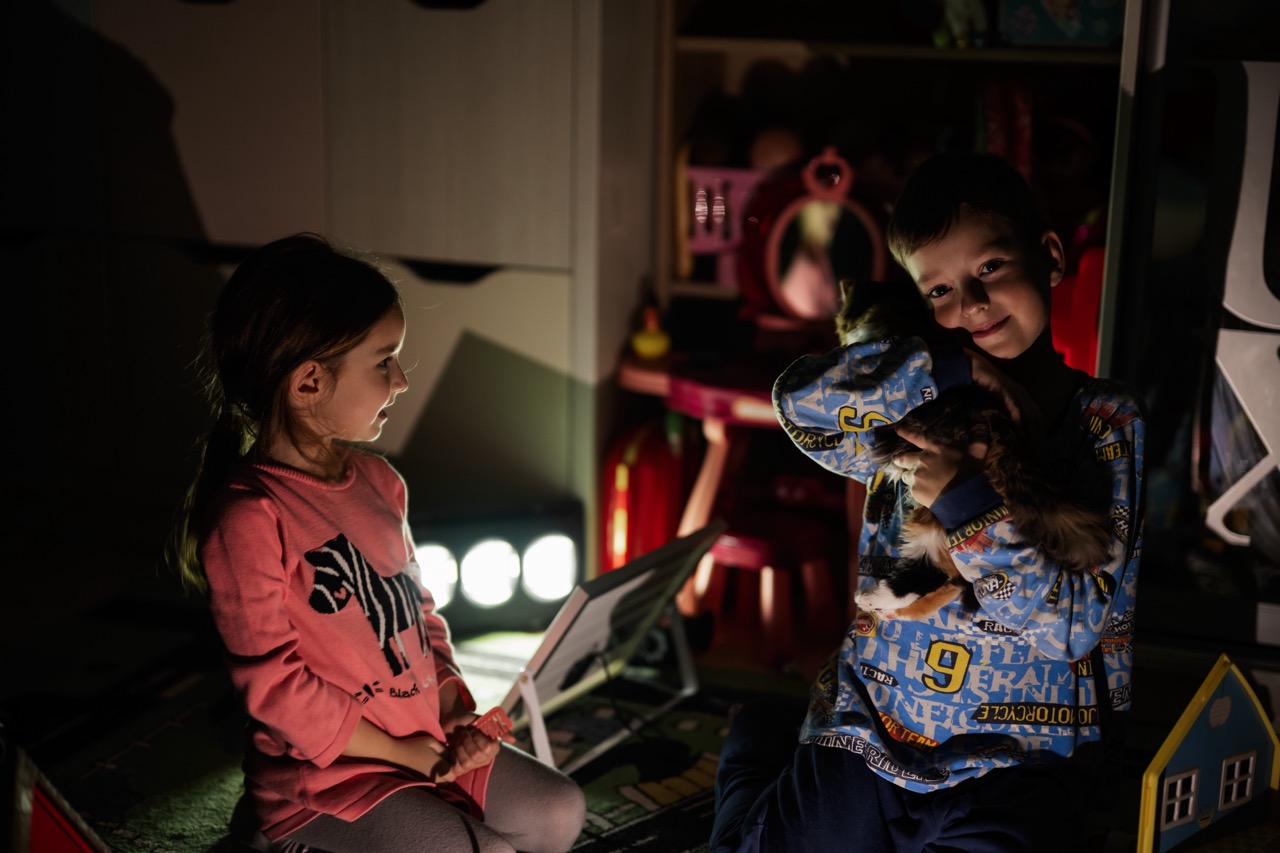In a world that often feels hurried and chaotic, establishing a daily storytime ritual can be a delightful way to engage with family while nurturing a love for reading. This simple yet impactful practice not only fosters a sense of connection but also enhances children’s linguistic skills, imagination, and emotional understanding. Whether you’re a parent, grandparent, or caregiver, making storytime a cherished daily habit can transform your household’s culture around literature and learning. Here’s how to turn storytime into a fun daily ritual that everyone looks forward to.
Discover the Joy of Daily Storytime Rituals
Creating a daily storytime ritual can bring a sense of calm and structure to your family life. The anticipation of settling down for a story can create a comforting routine that children look forward to each day. It becomes a shared experience that strengthens bonds and builds cherished memories. By making storytime a non-negotiable part of your day, you signal to your children that reading is important and enjoyable, paving the way for lifelong literacy habits.
Incorporating storytelling into your daily schedule can also serve as a time for family reflection. After a busy day, gathering to read can be a moment to unwind and reconnect. Discussing the story afterwards encourages critical thinking and helps children articulate their feelings and thoughts, enhancing their emotional intelligence. This exchange not only enriches their understanding of the narrative but also deepens your relationship.
Furthermore, daily storytime can spark curiosity about the world. Stories expose children to new ideas, cultures, and perspectives they may not encounter in their everyday lives. The joy of discovering fascinating characters and plots can ignite a passion for reading that extends beyond the storytime ritual, motivating children to explore books independently and broadening their horizons.
Selecting the Perfect Stories for Your Family
Choosing the right stories for your family is essential in making storytime an engaging experience. Start by considering the age and interests of your children. Younger children might enjoy colorful picture books filled with animals and adventures, while older kids might prefer chapter books with more complex narratives. Take time to explore various genres, including fantasy, mystery, and non-fiction, to keep things fresh and exciting.
Involving your children in the selection process can enhance their interest in reading. Allow them to pick out books from the library or bookstore, or let them choose from a collection of favorites you’ve curated. This sense of ownership can empower them and make them more excited about the stories you’ll read together. Don’t hesitate to introduce classics or award-winning books that can elevate their understanding of literature and encourage meaningful conversations.
Additionally, consider incorporating stories that reflect your family’s values and experiences. Books that celebrate diversity, resilience, and empathy can not only entertain but also serve as wonderful teaching moments. By selecting stories that resonate on a personal level, you create a rich tapestry of narratives that your family can revisit and cherish over time.
Creating a Cozy Environment for Storytime Delight
To fully immerse your family in the world of stories, it’s important to create a cozy and inviting environment for storytime. Designate a specific area in your home where you can gather—whether it be a comfy corner in the living room, a reading nook filled with pillows, or even outside under a tree on a sunny day. Having a dedicated space signals to your children that storytime is special and worthy of focus.
Consider the sensory elements that can enhance the storytime experience. Dim the lights, use soft blankets, and incorporate gentle background music or ambient sounds that complement the story. These small changes can create a magical atmosphere that draws children in and makes the experience more enjoyable. A cozy environment allows children to relax and engage with the narrative without distractions.
Additionally, make the space interactive by displaying a rotating selection of books, art related to the stories, or even props that relate to the tales you read. This not only makes the space inviting but also sparks curiosity and imagination. The more you engage your children with their surroundings, the more they will associate storytime with creativity and fun.
Engaging Kids with Interactive Storytelling Techniques
To keep kids engaged during storytime, consider incorporating interactive storytelling techniques that encourage participation and imagination. Ask questions about the story as you read, prompting them to predict what might happen next or how a character might feel. This not only holds their attention but also develops their critical thinking and comprehension skills.
You can also utilize props, puppets, or costumes while reading to bring the story to life. For instance, if you’re reading a tale about animals, use stuffed toys to represent the characters. This tactile involvement makes the experience memorable and allows children to connect more deeply with the characters and plot. Encourage your children to act out scenes or perform voices for different characters, fostering a sense of creativity and fun.
Another effective technique is to incorporate music or sound effects that correspond with the story. For example, mimic the sounds of nature for an outdoor adventure or use rhythm to enhance the mood of a dramatic moment. This multisensory approach stimulates children’s imaginations, making them feel like active participants in the storytelling process rather than passive listeners.
Incorporating Storytime into a Busy Family Schedule
Finding time for daily storytime in a busy family schedule might seem challenging, but it is achievable with a few strategic adjustments. Begin by setting a consistent time for storytime each day—whether it’s before dinner, during bath time, or right before bed. Consistency helps establish a routine that becomes part of your family’s daily rhythm.
Don’t hesitate to merge storytime with other activities. For instance, you can read while preparing dinner, allowing children to listen and engage while you cook. Alternatively, you can take storytime on the road by reading during commutes or waiting for appointments. Utilizing these pockets of time ensures that reading becomes a natural part of your daily life, regardless of how hectic schedules may be.
Lastly, involve all family members in the storytelling process. Rotate the responsibility of reading out loud among siblings or parents, or even encourage family members to share their favorite stories. This collective participation not only enriches the experience but also makes storytime a shared family affair, deepening connections among loved ones while fostering a love for literature.
Celebrating the Benefits of a Daily Reading Habit
The benefits of establishing a daily reading habit extend far beyond mere entertainment. Frequent storytime can significantly improve children’s vocabulary and literacy skills. Exposure to a variety of words and sentence structures enhances their language development, making them more confident communicators. As they encounter diverse characters and situations, they also develop empathy and emotional intelligence, which are crucial for navigating social interactions.
Moreover, daily storytime cultivates a love for reading that can last a lifetime. When children see reading as a joyful and shared experience, they are more likely to seek out books independently. This intrinsic motivation to read not only improves academic performance but also enhances their creativity and critical thinking skills. As they explore different narratives, they learn to analyze and interpret themes, preparing them for future literary pursuits.
Lastly, regular storytime sessions foster family bonding and create lasting memories. The shared experience of reading together can lead to meaningful conversations and discussions, allowing family members to engage with one another on a deeper level. As your children grow, these moments will become treasured memories, reinforcing the importance of storytelling in your family culture. Celebrating the impact of this daily ritual can inspire you to continue nurturing a love for literature in generations to come.
Turning storytime into a fun daily habit is not just about reading—it’s about creating lasting connections, inspiring creativity, and celebrating the joys of literature. By discovering the joy of daily rituals, selecting the perfect stories, creating a cozy environment, engaging through interactive techniques, incorporating storytime into busy schedules, and celebrating the myriad benefits of reading, families can cultivate a love for storytelling that enriches their lives. So gather your loved ones, find a cozy spot, and let the magic of stories bring your family closer together, one page at a time.










